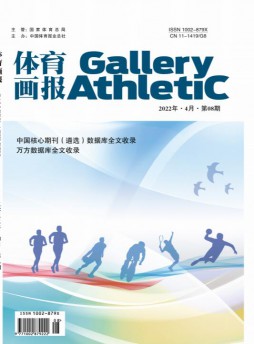體育系畢業論文范文
前言:我們精心挑選了數篇優質體育系畢業論文文章,供您閱讀參考。期待這些文章能為您帶來啟發,助您在寫作的道路上更上一層樓。
第1篇
1、 語言類
1、 The Importance of Oral English
2、 A Comparative Study of American English and British English
3、 The Characteristics of Spoken English
4、 Formal and Informal English
5、 On English- Chinese and Chinese- English Translation
6、 The Function of Figurative Language
7、 Body Language –An Important Means of Communication
8、 Colloquial English and Written English
9、 Linguistic Study of Journalistic Language
10、 The Characteristics of Business English
11、 The Function of Grammar in English Acquisition
12、 The Application of English Euphemisms
13、 Similarities and Dissimilarities between Chinese and English
14、 Basic Characteristics of Business Letters
15、 A Linguistic Comparison Between Business English and Literary English
16、 The Main Differences Between American English and British English
17、 Adjustment of Syntactic Components for Forcibleness and Impressiveness
18、 The Word BUT in Negation
19、 A Study of Nominal Relative Clauses
20、 The Expressive Function of the Continuous Tense in English
21、 The Characteristics of Scientific English
22、 The Characteristics of English Journalism
23、 The Function of English Idioms
24、 English Idioms and Chinese Idioms-----A Comparative Study
25、 English and Chinese Sound Systems-----A Comparative Study
26、 On English Rhetorical Devices
27、 How the English Language Creates New Words
28、 How the English Language Enlarges Its Vocabulary
29、 How Journalistic English Shortens Its Words
30、 The Witty Use of Conversion in English Journalism
31、 The Witty Use of Compounding in English Journalism
32、 A Pragmatic Study on Conversations
33、 The Practical Use of Co-operative Principles
34、 How to Distinguish English Synonyms
35、 The Distinctive Features of Advertising English
36、 The Features of the English Basic Word-- Stock
37、 The Essential Features of Phrasal Verbs
38、 The Essential Features of English Idioms
39、 Functions of Language
40、 A Study on English Lexical Collocations
41、 How to Use the English Dictionary Effectively
42、 Improving Listening Comprehension through Anticipation
43、 The Relationship Between “Listening” and “Speaking” in English Learning
44、 Error Analysis and Improving Ability in English
45、 A Preliminary Discussion on Cohesion
46、 The Influence of the Native Tongue on Second Language Acquisition
47、 A Psychological Study on Second Language Acquisition—Individual Varieties and Differences in Teaching
48、 A Comparative Study of Scientific English and English for Advertising
49、 A Study of the Language in Advertisement
50、 A Comparison Between Sino-American Higher Education
51、 A Study of the Web-Chat Language
52、 Discourse Analysis of Advertising Chinese?
53、 Exploring Gender-related Communication Styles in Chinese
54、 Cultivation of Awareness of Cohesive Devices in English Writing
55、 A Contrastive Study of Theme and Rhyme in English and Chinese
56、 The Function Approach to the Reference of the Chinese Reflexive“自己”
57、 Study on Refusal Strategies in Verbal Communication
58、 Investigating Humor in the Light of Relevance Theory
59、 On English Allusions
2、翻譯類
60、The Top Criterion Appraising A Piece of Translation
61、Some Fundamental Qualities of a Competent Translator
62、A comparison and Translation of the Passive Voice in English and Chinese
63、How to Translate English Idioms
64、How to Translate English Proverbs
65、What can Linguistics do in Translation
66、Linguistic Approaches to Translation
67、Translation from a Linguistic Perspective
68、The Techniques of Chinese-English Translation
69、The Techniques of English-Chinese Translation
70、The Application of General Translation Theory to Business Translation Practice
71、How Executing Business English Translation Differs From Executing Business English
Interpretation
72、On Translation Methods
73、Translation of English Negative Sentences
74、Language Barriers in Translation
75、Translation Criteria
76、An Approach to Translation of Numeral and Measuring Words
77、A Study of Yan Fu’s View on Translation
78、Cultural Discrepancies in E-C/C-E Tourism Translation
79、C-E Translation of Long Sentences
80、Comments on Huang Yuangshen’s Version of Jane Eyre
81、“Addtion”and “Deletion” in C-E and E-c Translation
82、Translation of Trademarks
83、Translation of Advertisements
第2篇
thesis statement: the methods of chinese translation of english idioms are discussed from two perspectives. first, it is discussed according to the relationship between english idioms and chinese idioms. second, seven practical translating ways and skills are elaborated from the point of view of keeping the flavor of the english idioms as well as catering for chinese readers.
1. introduction
1.1 the understanding of english idioms
1.2 the sources of english idioms
1.3 the main content of the thesis
2. the categories if chinese translation of english idioms
2.1 the translation of corresponding idioms
2.1.1 word-equivalence
2.1.2 word-amplification
2.2 the translation of partial corresponding idioms
3. seven practical translating ways of english idioms
3.1
3.2
4. conclusion
4.1 restatement of the main idea
4.2 limitations of the thesis
4.3 suggestions for teaching of e-c translation
5. bibliography
[1] fu shaohua付少華.2003.習語的文化特征[j].福州大學學報(哲社版),3:25-30.
[2] he huigang何慧剛.2004.英漢習語翻譯與文化交流[m].北京:外語教學與研究出版社.
………..
宋體,三號,加粗,居中
宋體,四號,
居中,四號,宋體,加粗
居中,四號,times new roman, 加粗
小四,times new roman
四號,加粗,times new roman,以下同此要求
第3篇
【關鍵詞】本科教育;畢業論文;質量工程;素質教育
本科生畢業論文(設計)是高等院校本科專業教學計劃的重要組成部分,是學生在校完成本專業課程教育后的一次知識技能綜合考核,對加強學生的知識綜合運用能力、培養學生科學研究能力及獨立工作能力具有重要意義。畢業論文不僅是培養和考察學生理論聯系實際,分析、解決實際問題能力的重要實踐教學環節,也是衡量和檢驗高等院校教學質量的重要方面。因此,對高等院校畢業論文質量的評定也自然成為教學工作水平評估的一項重要內容。近幾年,作者以科研項目為背景指導了多名化學、化工專業本科生畢業論文,對指導學生完成論文,培養學生的科研能力,提高學生的綜合素質和知識應用能力等相關問題進行了思考和實踐探索。
一、本科畢業論文在創新人才培養中的重要意義
首先,畢業論文是大學生完成學業的標志性作業,是對四年學習成果的綜合性總結和檢閱;其次,畢業論文是高等學校培養人才的重要實踐教學環節,在當今培養富有創新精神和實踐能力的人才方面起重要作用;最后本科論文是學生走上工作崗位前的全面演練,為將來的工作提供實踐基礎,同時也是用人單位考察發現人才、錄用人才的依據。好的畢業論文應具有扎實的文字功底、嚴謹的實驗方法和突出的創新精神等幾大要素。所以嚴抓論文質量可以激發學生學習熱情、提高學生動手能力和思辨能力、培養學生創新意識,是培養一名優秀畢業生的途徑之一。
二、影響本科畢業論文質量的主要因素
1.指導教師數量不足,精力有限。目前,本科畢業論文主要采用的教學管理模式是導師負責制,由導師對學生的整個學習過程進行管理并對其負責。所以導師在整個教學環節中起主導作用,需要具有較好的選題和投入極大的精力。但是,近幾年來高校招生人數快速增長,使高校教師資源明顯不足,加上職稱和學位的限制,能夠指導畢業論文的教師數量非常有限,經常會出現一名教師指導十名左右畢業生的現象。
2.學生態度不夠重視,精力投入有限。 學生在本科畢業論文的教學環節中是主體,他們需要積極主動、全心全意的投入其中。但是現在很少有畢業生因為畢業論文質量低而不能畢業的,所以學生對畢業論文不重視,態度不認真。很多學生認為,畢業論文只不過是在走過場。
3.實驗經費不足,實驗條件不佳,管理制度落后。完成理工科類的畢業論文一般需要進實驗室獲取大量實驗數據,這需要實驗資金、儀器、場地等,是一項需要較大經費投入的教學環節。但目前理工科類本科論文經費過低,一個本科生畢業論文經費僅為400元,對于化學專業的學生,這些經費遠遠不能滿足其實驗耗材、藥品、儀器及相關檢測的需要。所以提高畢業論文經費的投入是確保畢業論文質量的基本條件。另外,學校對于本科畢業論文的管理制度大大影響了其質量。對論文質量要求不高,過于強調就業率,考研率等眼前利益,忽視了學生的畢業論文水準。
三、提高本科畢業論文質量的對策
1.提高認識,加強管理。提高對畢業論文的認識是提高畢業論文質量的前提,要認識到畢業論文是高校教學計劃的重要組成部分,它與其它教學環節彼此配合,相輔相成,構成一個完整的教學體系,而它的實踐性和綜合性是其他教學環節所不能代替的。從更深層的意義來講,畢業論文不僅僅是一個實踐教學環節,它是高校實現人才培養目標的重要手段,是學生四年所學知識的深化與升華的重要過程,是對學生進行科學教育、培養探求真理精神,提高學生科研訓練能力、分析問題和解決問題能力的有效途徑。
2.加強指導,實施導師負責制。 對指導教師進行嚴格篩選,實行導師負責制,加強對本科畢業論文質量的管理。指導教師責任制是指負責對本科生畢業論文工作的全過程、全方位指導,包括:①負責指導本科生選題,確定研究方向,介紹該領域的最新研究動態及存在問題;②負責指導學生查閱相關文獻,介紹查閱方法,搜集該選題前沿資料及相關信息;③負責指導學生確定畢業論文題目,并對相關文獻資料進行匯總、分類、分析等;④負責設計實驗路線、實施方案,分析是否切實可行;⑤負責指導學生進行實驗研究方案的撰寫,及時提出問題和改進意見,幫助學生立論和分析實驗結果。



